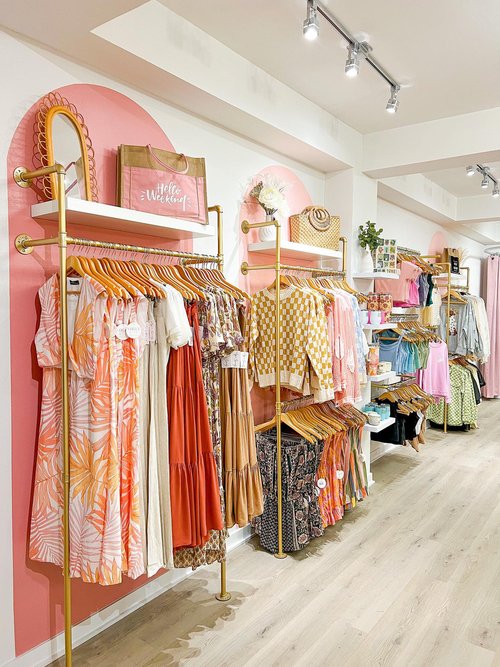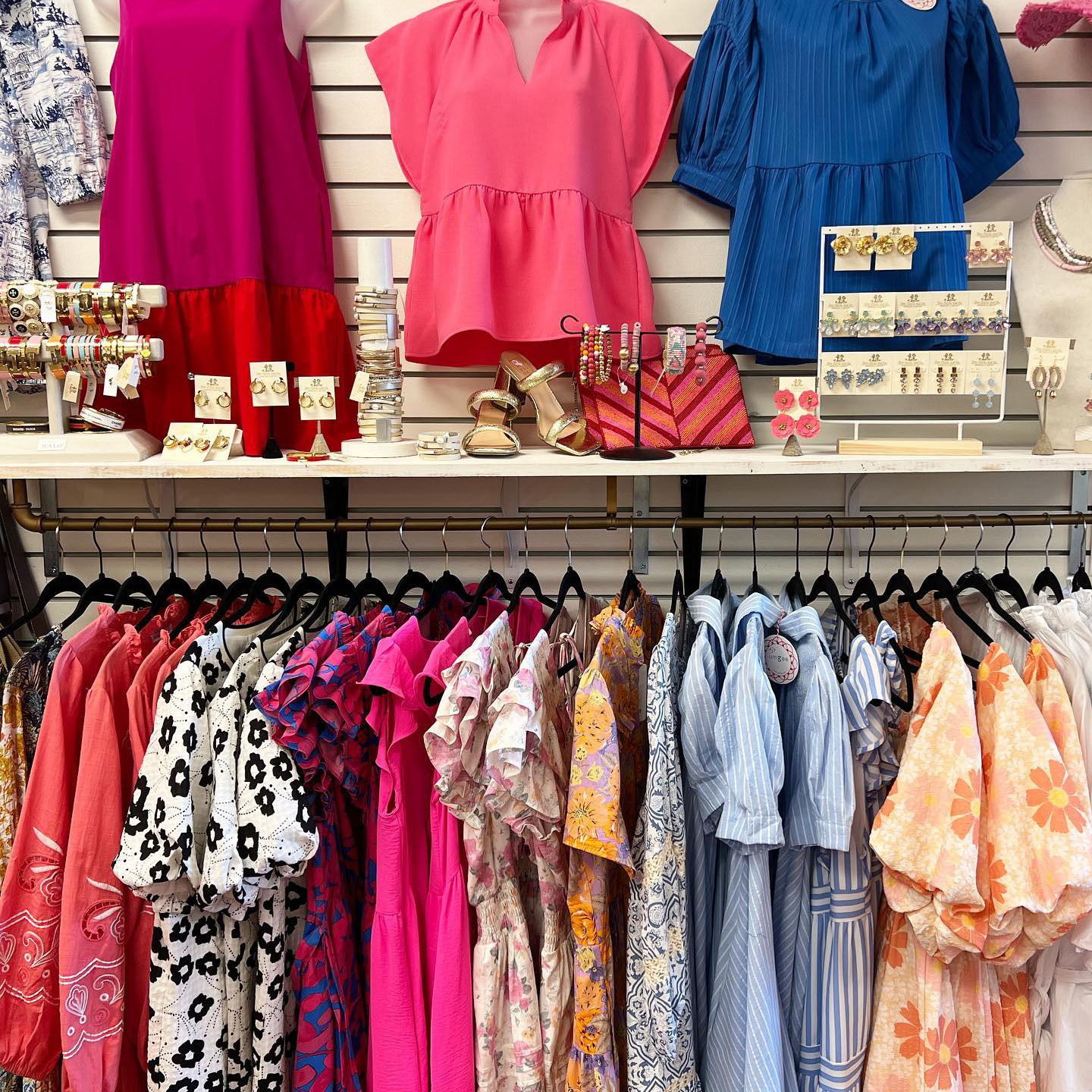Lasting Fashion: Just How Eco-Friendly Garments Is Forming the Future of Design
As the garment industry encounters raising scrutiny over its ecological impact, the increase of lasting fashion supplies an appealing option that aligns style with eco-friendly obligation. Utilizing cutting-edge materials such as recycled fibers and plant-based fabrics, along with sophisticated methods like electronic and 3D printing, developers are redefining what it implies to be trendy in the modern-day age. Simultaneously, the expanding popularity of upcycling and thrift culture is promoting a shift towards a circular economic climate. Exactly how does this motion genuinely influence the future trajectory of fashion, and what difficulties exist ahead in its widespread fostering?
Ingenious Sustainable Materials
As the style industry grapples with its environmental effect, ingenious lasting materials have become a vital remedy for decreasing environmental impacts. Amongst one of the most appealing products are those stemmed from natural, renewable resources, such as organic cotton, hemp, and bamboo. These materials not only reduce reliance on nonrenewable fuel sources yet additionally decrease dangerous chemical usage and water usage. Organic cotton, for instance, utilizes substantially much less water than traditional cotton and eliminates the demand for poisonous chemicals, therefore maintaining soil health and wellness and biodiversity.
Along with plant-based materials, improvements in biofabrication have brought about the development of lab-grown fabrics. Mycelium natural leather, originated from mushroom origins, presents a flexible and naturally degradable choice to animal leather. Its manufacturing causes significantly lower carbon emissions and water use, making it a much more lasting choice for designer seeking to straighten with green practices.
Recycled products are additionally obtaining traction, with polyester made from recycled plastic bottles standing for a substantial development. This development not just draws away plastic waste from oceans and land fills but likewise minimizes energy consumption contrasted to creating virgin polyester. With each other, these products underscore the possibility for a more sustainable garment industry, leading the way for ecologically conscious design and manufacturing.
Eco-Conscious Manufacturing
Building on the developments in sustainable materials, the apparel industry is additionally re-evaluating its production procedures to better lower ecological effect. Secret approaches consist of lessening water intake, decreasing carbon exhausts, and eliminating unsafe chemicals. By adopting closed-loop systems, producers intend to reuse water and power efficiently, dramatically decreasing waste. The combination of renewable resource resources, such as solar and wind power, into manufacturing facilities better cuts reliance on nonrenewable fuel sources.
An additional important facet is the reduction of hazardous chemicals typically used in coloring and finishing textiles. Eco-conscious suppliers are changing towards plant-based dyes and waterless dyeing technologies, which not only safeguard neighborhood environments but additionally improve worker safety and security. Advancements like electronic printing lower textile waste and power consumption, using a cleaner option to conventional techniques.
With the innovation of blockchain modern technology, firms can currently supply comprehensive insights into their supply chains, making sure ecologically friendly and moral techniques at each step. As the need for eco-conscious products grows, producers are forced to innovate, ensuring that the future of fashion is both lasting and elegant.
The Increase of Upcycling
Upcycling, a transformative method in lasting fashion, includes artistically repurposing thrown out products right into brand-new, premium items. This ingenious technique not only minimizes waste yet additionally reduces the demand for raw products, thereby decreasing the environmental impact of clothes manufacturing. By rebuilding and reimagining existing items, designers and fashion brands have the ability to infuse originality right into their collections while advertising ecological obligation.

Moreover, the upcycling activity has actually empowered tiny businesses and independent developers, that typically lead in technology because of their agility and creative thinking. By taking advantage of the plentiful accessibility of extra products, these entities add to a circular economic situation, showing that style can be both lasting and trendy. Through upcycling, the sector takes considerable strides towards a more accountable and mindful future.
Thrift Culture's Influence
The blossoming second hand culture significantly improves the landscape of lasting style, stressing the significance of mindful consumption. This cultural change urges customers to embrace pre-owned apparel, therefore reducing the need for brand-new garment production and lessening environmental impact. Thrift purchasing not only prolongs the lifecycle of apparel however also decreases the carbon impact connected with production, moving, and dealing with garments.
A crucial aspect of thrift society is its democratization of fashion. By providing a broad array of styles from numerous ages at affordable prices, thrift shops make fashion available to a more comprehensive target market. This access cultivates a sense of originality and imagination, as consumers mix and match distinct items to curate individualized wardrobes without contributing to the fast style cycle.
Additionally, second hand society promotes circularity in vogue, aligning with the concepts of a round economy. By recirculating garments, the cycle of waste is interrupted, and sources are preserved. This technique sustains a shift from a straight "take-make-dispose" version to an extra lasting framework. As more customers and designers welcome thrift culture, the apparel industry is compelled to adjust, integrating sustainable practices to meet the expanding need for eco-conscious choices.

Future Trends in Fashion
Fashion's advancement is increasingly formed by technical innovations and sustainability-driven efforts. As consumers end try this web-site up being a lot more eco aware, the market is reacting with groundbreaking innovations that redefine the future of design. One popular pattern is the increase of electronic style, where online garments can be put on in augmented fact environments, considerably decreasing material waste. This shift not only caters to the digital-savvy consumer yet additionally reduces the ecological footprint generally related to garment production.
In addition, the integration of blockchain technology offers brand-new opportunities in openness and traceability, allowing consumers to verify the sustainability credentials of their clothes. boutique fashion. This makes sure liability in supply chains and advertises moral sourcing techniques. 3D printing is yet an additional development that promises to change manufacturing processes by making it possible for on-demand production, thus reducing excess stock and waste
Furthermore, the growth of bio-fabricated materials, such as lab-grown leather and plant-based textiles, presents sustainable choices to standard materials. These advancements lower dependence on animal items and resource-intensive plants. As these innovations grow, they are poised to change the style landscape, merging style with sustainability. The future of style, as a result, hinges on a seamless blend of modern technology, development, and eco-friendly duty.
Final Thought
The change of the fashion business with lasting practices indicates a pivotal shift towards ecological accountability. The combination of cutting-edge materials, eco-conscious manufacturing methods, and the embracement of upcycling and second hand culture emphasizes a commitment to reducing eco-friendly footprints. As these methods acquire momentum, they redefine the sector's story by focusing on honest and lasting options. This development not only straightens style with ecological sustainability yet additionally establishes a criterion for future trends concentrated on duty and advancement.
As the style sector deals with raising examination over its environmental effect, the rise of sustainable fashion uses an encouraging choice that straightens style with environmental responsibility.As the fashion industry grapples with its environmental impact, cutting-edge sustainable materials have actually arised as a critical remedy for minimizing environmental footprints. With each other, these products underscore the potential for a more sustainable style industry, paving the method for environmentally conscious style and production.
Building on the technologies in sustainable products, the fashion sector is additionally re-evaluating its production procedures to additionally decrease Get More Info ecological impact. boutique fashion.Upcycling, a transformative method in sustainable fashion, entails artistically repurposing disposed of materials into home new, premium products